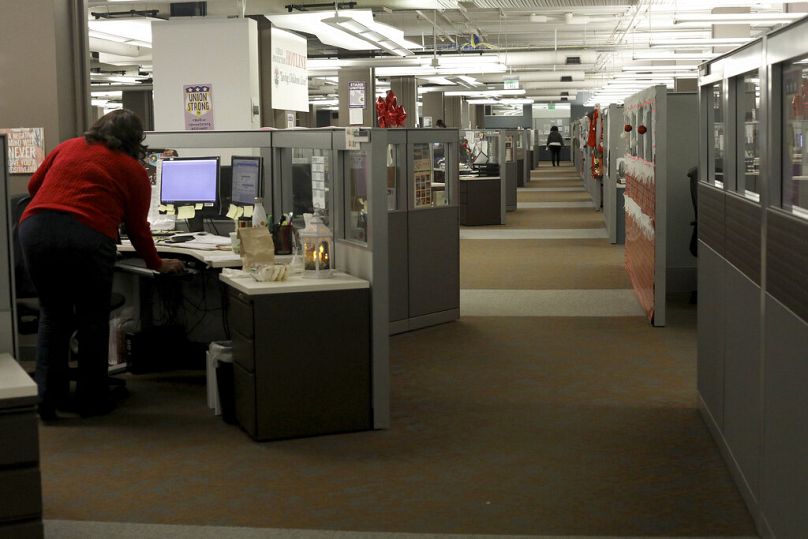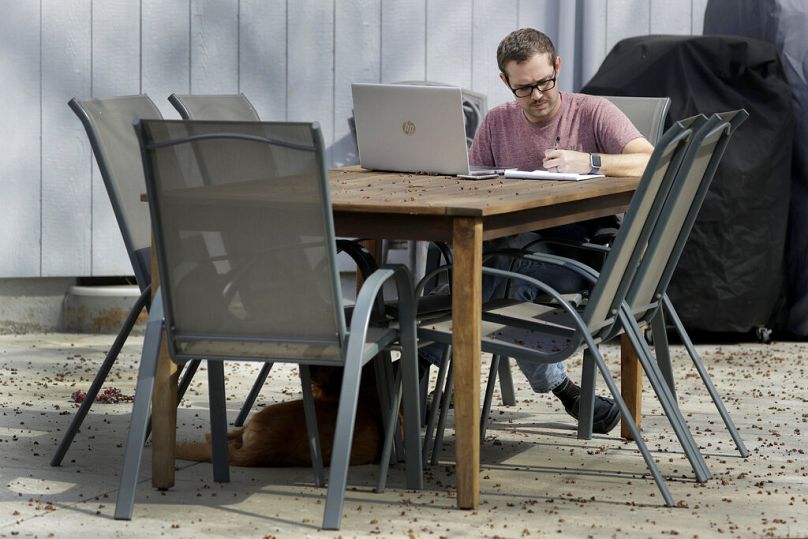Technology shouldn’t make us feel worse; it’s supposed to improve our lives, Arto Vahvanen writes.
Most workplace tech isn’t helpful. Here are three ways to make office technology work for us, not against us.
As employees return to the workplace — and companies remodel offices at a scale never seen before — an unprecedented opportunity to rethink office technology is upon us.
Many CTOs are seizing the moment by infusing the office with vast amounts of new tech.
In the next five years, approximately 75% of leaders will adopt the Internet of Things and connected devices, as well as AI. 80% more will incorporate big-data analytics.
The intention is to accommodate new ways of working, increase efficiency, and improve employee satisfaction too.
Yet more tech doesn’t always mean better tech. In fact, most new sophisticated workplace technology creates more problems for the office than it helps solve.
This is ultimately due to poor strategy in implementation.
In my role as head of digital, I lead smart and data-driven workplace space management and planning. That includes envisioning new office technology solutions and rethinking old, outdated ways of operating.
The most common mistake I see big companies make is over-relying on useless technology.
What’s needed when integrating new office tech is something more mindful: an employee-first model.
That means prioritising the real assets of the company — the employees and their well-being, and the physical office space — and using technology to support and enhance those elements, rather than the other way around.
How can we use tech to make the office more human?
Technology shouldn’t alter our behaviour; it should optimise it.
For generations, companies have been forcing people to work within the constraints of the physical office.
Employees have been placed in cubicles, then open-plan offices, and then at home, and then in a mixed hybrid work environment. Through it all, employees have been required to adapt and change their behaviour to fit these new environments.
That is no longer necessary. In fact, it’s an approach that should be actively discouraged.
With a wealth of new behavioural data on hand, offices can now, for the first time in history, be built and designed entirely on employees’ needs.
Thanks to new analytics tools that collect anonymised data, facility managers can track working patterns and make data-driven decisions on office design.
Employees can then, with smarter spatial design, maximize their efficiency and speed in how and where they work at the office.
By addressing the root problem with office design, managers can stop investing in useless new tech designed for office space optimisation.
“Innovations” like booking systems for hotdesking become obsolete when the office is already optimised in terms of its overall flow of people. Employees don’t need to stress or fight over limited workspaces; there’s always a free desk available for everyone.
Tech can enhance physical offices, not replace them
Technology shouldn’t replace our physical meeting spaces; it ought to enhance them.
Remote work has brought with it an unprecedented level of adoption in office technology. More than 80% of all meetings now feature at least one remote participant, and that figure will only continue to rise in years to come.
And yet, dissatisfaction with virtual meetings is real. There is now a growing understanding that tech alone will not be enough to effectively bring people together to work. What’s needed just as much are physical spaces for employees to meet in.
The Allen Curve powerfully demonstrates how critical office space is in fostering collaboration. Other studies have shown that live interactions are much more powerful than digital representations in building connectedness between people.
It follows, then, that technology, too, should be used to enhance — and not replace — the physical spaces where people come together to work.
With new technology, that is more attainable than ever. The immersive quality of in-person meetings, for example, can be strongly enhanced at all offices.
Smart environments leveraging IoT devices can monitor and intuitively adjust various parameters, such as lighting, temperature, and noise levels, to create optimal working conditions.
In these sensory-rich meeting environments, new ideas are more likely to flourish, and complex information can be conveyed and received by meeting participants in ways that lead to deeper understanding and collaboration.
These adjustments help make the office a more accommodating and attractive place for everyone – including employees with special needs.
Putting the human element at the core of all work
Technology shouldn’t make us feel worse; it’s supposed to improve our lives.
Workers everywhere are unprecedentedly stressed out. 44% say they are experiencing “a lot” of stress at work. Not only is this unsustainable for employees, but it also hurts the company’s output.
Much of the deterioration in employee mental health is due to new office technology. The demands to be constantly “on” — along with a sharp rise in worker surveillance tech — have led to a detrimental loop where employees can’t seem to find the time to recharge.
What office technology needs to do now is support and prioritise employee mental health.
New technologies can track employee wellness over time, and flag burnout risk before it takes root.
These systems run on both anonymised and self-reported data. The wellness-tech therefore helps employees learn more about their bodies and understand their stressors, and allows everyone at the office to implement changes to the way they work.
Tracking sensitive data such as these requires trust and empathy. That’s why wellness tech, like all office tech, must be built employees-first.
Putting the human element at the core of all work technology ensures that these new tools don’t just dispirit employees but actually support them.
Arto Vahvanen is Head of Digital Offerings and Customer Experience at Framery and former Lead Product Manager at Nokia.
At Euronews, we believe all views matter. Contact us at view@euronews.com to send pitches or submissions and be part of the conversation.













